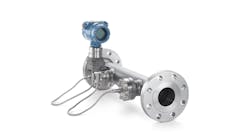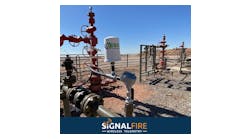I recently read an Internet posting by a well-respected instrumentation engineer about selecting instruments for vacuum service. His comments are informative in that he mentions that instruments can be damaged when operated under vacuum. Vessels can also be damaged.
The plant in which I worked in a previous professional life a tank that held somewhat less volume after it encountered a vacuum. In this case, pumping liquid out of the tank while the inlet and vent valves were closed caused a vacuum to be created in the tank. The tank partially collapsed, but fortunately no one was hurt and no liquid escaped.
Many flowmeters can withstand a full vacuum – especially when the flowmeter is constructed entirely of metal. However, vacuum service can be catastrophic to some flowmeter designs. A case in point is that of magnetic flowmeters where certain liners can actually be sucked into the pipe when a vacuum condition occurs. If vacuum limitations exist, you can usually find them in the manufacturer specifications – if you are looking for them. They often appear as notes at the bottom of tables or in fine print. As previously stated, be careful because exceeding the vacuum specification can be catastrophic.
Interestingly, the engineer took designing for vacuum service one step farther by suggesting that all instrumentation be designed for vacuum service – even when the instrument would seemingly not operate under vacuum. His rationale was that many instruments that should not operate under vacuum can, and do, operate under vacuum.
Consider measuring the pressure at the bottom of a distillation column operating at atmospheric pressure. The gauge pressure at the bottom of the column might be (say) 0.5 bar. A one-meter long impulse tube connects the pressure tap to the pressure transmitter. The distillation column runs under pressure, has an atmospheric vent and has no source of vacuum. Yet the pressure transmitter routinely measures pressures below atmospheric pressure when the distillation column was operating. In this installation, the process gas condensed in the impulse tube and caused a vacuum condition to occur.
Similarly, what if a vessel was blocked in while being cleaned with steam? The condensing steam can create a vacuum that could collapse the tank.
There is something to be said for conservative design – regardless of its political ramifications.
David W. Spitzer is a regular contributor to Flow Control with more than 35 years of experience in specifying, building, installing, startup, troubleshooting and teaching process control instrumentation. Mr. Spitzer has written over 10 books and 150 technical articles about instrumentation and process control, including the popular “Consumer Guide” series that compares flowmeters by supplier. Mr. Spitzer is a principal in Spitzer and Boyes LLC, offering engineering, expert witness, development, marketing, and distribution consulting for manufacturing and automation companies. He can be reached at 845 623-1830.


